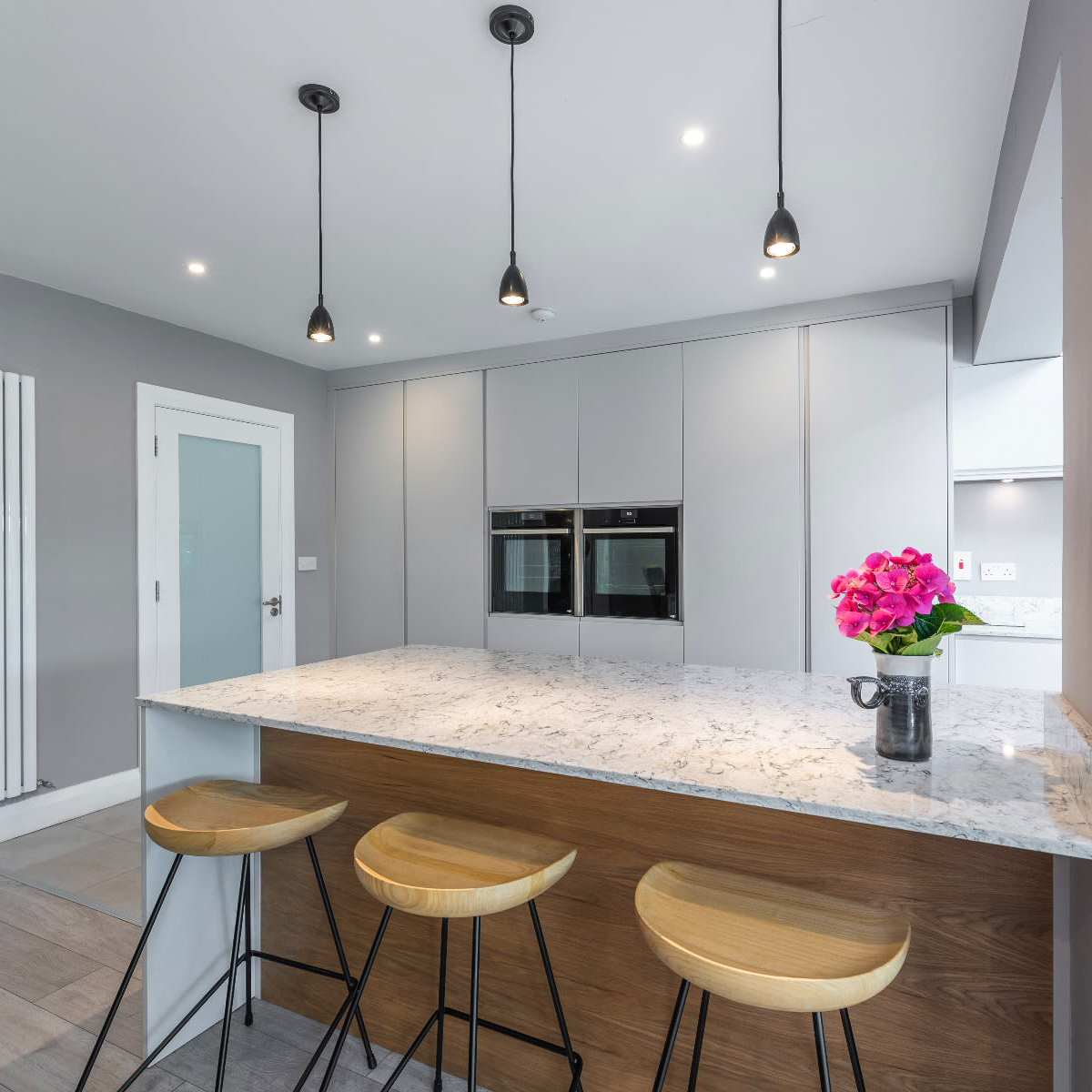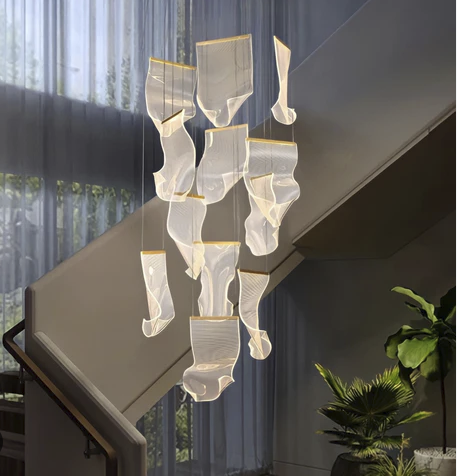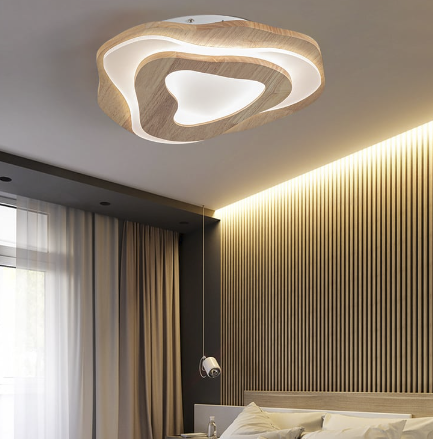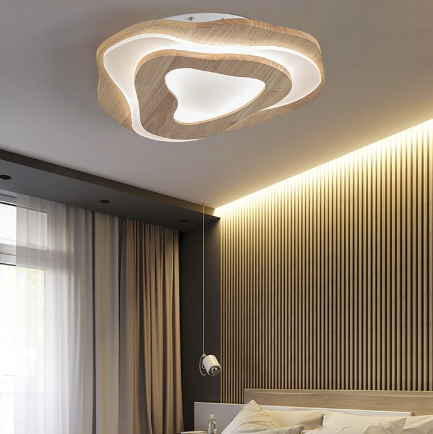
Lighting is an essential element in interior design, as it has the power to completely transform the look and feel of a room. One of the most impactful lighting fixtures in any space is the ceiling light. Whether you’re looking to create a cozy ambiance or make a bold statement, the right ceiling light can enhance your home and elevate your interior design. Xlightings.com
Ceiling lights come in a variety of styles, sizes, and materials, allowing you to find the perfect fit for your room. From chandeliers to flush mounts, there are options for every aesthetic and budget. By carefully selecting the right ceiling light, you can create a focal point in your room and set the tone for the entire space.
Key Takeaways
- A ceiling light can transform the look and feel of a room.
- There are various types of ceiling lights, from chandeliers to flush mounts.
- Choosing the right size of ceiling light is important for matching it to your room.
- Materials and finishes for ceiling lights come in a range of styles and budgets.
- Lighting design is crucial for creating a welcoming and functional space.
Types of Ceiling Lights: From Chandeliers to Flush Mounts
When it comes to ceiling lights, there are several types to choose from. Chandeliers are a popular choice for those looking to make a statement. They often feature multiple arms or tiers with decorative elements such as crystals or glass shades. Chandeliers can add elegance and drama to any room, but they may not be suitable for smaller spaces due to their size.
Flush mounts are another common type of ceiling light. These fixtures are mounted directly against the ceiling, making them ideal for rooms with low ceilings or limited space. Flush mounts come in a variety of styles, from simple and understated to more decorative designs. They provide general illumination and can be used in any room of the house.
Pendant lights are another option for ceiling lighting. These fixtures hang from the ceiling by a cord or chain and can be used as task lighting or decorative accents. Pendant lights come in various shapes and sizes, allowing you to create a customized look for your space.
Choosing the Right Size: Tips for Matching Your Ceiling Light to Your Room
Choosing the right size of ceiling light is crucial to ensure that it complements your room and doesn’t overpower or underwhelm the space. One way to determine the appropriate size is to consider the dimensions of the room. For example, in a small bedroom or hallway, a flush mount or pendant light with a smaller diameter would be more suitable. In larger rooms, such as a dining room or living room, a chandelier with a larger diameter can make a bold statement.
Another factor to consider when choosing the size of your ceiling light is the height of the ceiling. In rooms with low ceilings, it’s important to select a fixture that doesn’t hang too low and create a cramped feeling. On the other hand, in rooms with high ceilings, you have more flexibility to choose a larger fixture that can fill the vertical space.
In addition to size, it’s also important to match the style of the ceiling light to your room. If you have a modern or minimalist aesthetic, a sleek and simple flush mount or pendant light would be a good choice. For a more traditional or glamorous look, a chandelier with ornate details and crystals would be more fitting.
Materials and Finishes: Options for Every Style and Budget
| Material/Finish | Description | Pros | Cons |
|---|---|---|---|
| Hardwood | Natural wood from deciduous trees | Durable, timeless, adds warmth to a space | Expensive, can be prone to scratches and dents |
| Laminate | Composite material made of paper and resin | Affordable, easy to clean, comes in a variety of styles | Not as durable as other materials, can be prone to chipping and peeling |
| Tile | Ceramic or porcelain tiles in various sizes and shapes | Durable, water-resistant, easy to clean | Cold and hard underfoot, can be slippery when wet |
| Granite | Natural stone with unique patterns and colors | Durable, heat-resistant, adds value to a home | Expensive, requires regular sealing to prevent stains |
| Stainless Steel | Metal alloy that is resistant to corrosion and staining | Durable, easy to clean, modern look | Can be noisy, shows fingerprints and scratches easily |
Ceiling lights come in a variety of materials and finishes, allowing you to find the perfect match for your room’s style and your budget. Common materials used for ceiling lights include metal, glass, crystal, and fabric.
Metal is a popular choice for its durability and versatility. It can be finished in various ways, such as brushed nickel, bronze, or brass, to complement different design styles. Glass is another common material used for ceiling lights, as it provides a clean and modern look. Crystal is often used for chandeliers to add elegance and sparkle to a space. Fabric shades are commonly found on pendant lights and can add warmth and texture to a room.
When choosing the material and finish for your ceiling light, consider the overall aesthetic of your room. If you have a contemporary or industrial style, a metal or glass fixture would be a good fit. For a more traditional or glamorous look, a crystal chandelier would be a stunning choice.
Lighting Design: How to Create a Welcoming and Functional Space
Lighting design is an important aspect of creating a welcoming and functional space. It involves considering the different types of lighting needed in a room and how they can be used to enhance the overall design.
There are three main types of lighting: ambient, task, and accent. Ambient lighting provides overall illumination and is typically provided by ceiling lights. Task lighting is focused lighting that is used for specific activities such as reading or cooking. Accent lighting is used to highlight specific objects or areas in a room, such as artwork or architectural features.
To create a well-designed lighting plan for your room, consider the function of the space and the activities that will take place there. For example, in a kitchen, you’ll want to ensure that there is adequate task lighting over the countertops and stove. In a living room, you may want to incorporate accent lighting to highlight artwork or decorative elements.
Installation: DIY or Professional? What You Need to Know

When it comes to installing a ceiling light, you have the option to do it yourself or hire a professional. Both options have their pros and cons, so it’s important to consider your skill level and comfort with electrical work before making a decision.
DIY installation can save you money, but it requires some basic electrical knowledge and skills. If you’re comfortable working with electricity and have experience with basic wiring, you may be able to successfully install a ceiling light on your own. However, if you’re unsure about your abilities or don’t have any experience with electrical work, it’s best to hire a professional to ensure the job is done safely and correctly.
Before installing a ceiling light, there are a few things you need to know. First, make sure you turn off the power to the circuit you’ll be working on at the breaker box. This will prevent any accidents or injuries while you’re installing the light. Second, carefully read and follow the instructions that come with the fixture. Each light may have specific installation requirements, so it’s important to follow them closely.
Maintenance and Cleaning: Keeping Your Ceiling Light Looking Its Best
To keep your ceiling light looking its best, regular maintenance and cleaning are necessary. Dust and dirt can accumulate on the fixture over time, dulling its appearance and reducing its effectiveness.
To clean your ceiling light, start by turning off the power to the fixture at the breaker box. This will ensure your safety while cleaning. Use a soft cloth or duster to gently remove any dust or dirt from the surface of the light. If there are any glass or crystal elements, you can use a glass cleaner to remove smudges or fingerprints.
It’s also important to regularly check the bulbs in your ceiling light and replace them as needed. Burnt-out bulbs can affect the overall lighting in your room and make your ceiling light less effective.
The frequency of cleaning and maintenance will depend on factors such as the location of the fixture and the amount of dust in your home. As a general rule, it’s a good idea to clean your ceiling light at least once every few months to keep it looking its best.
Energy Efficiency: How to Reduce Your Electricity Bill While Enjoying Beautiful Lighting
In addition to aesthetics and functionality, energy efficiency is an important consideration when choosing a ceiling light. Energy-efficient lighting not only helps reduce your electricity bill but also has a positive impact on the environment.
When choosing an energy-efficient ceiling light, look for fixtures that are labeled with an ENERGY STAR certification. These lights meet strict energy efficiency guidelines set by the U.S. Environmental Protection Agency and can help you save money on your electricity bill.
There are several ways to reduce your electricity bill while enjoying beautiful lighting. First, consider using LED bulbs in your ceiling light. LED bulbs are more energy-efficient than traditional incandescent bulbs and can last up to 25 times longer. They also produce less heat, which can help reduce cooling costs in the summer.
Another way to save energy is by using dimmer switches or timers with your ceiling light. Dimmers allow you to adjust the brightness of the light, which can help create a cozy ambiance and save energy. Timers can be programmed to turn the lights on and off at specific times, ensuring that they’re not left on when not needed.
Trends and Inspiration: The Latest Designs and Ideas
When it comes to ceiling lights, there are always new trends and designs emerging. Staying up to date with the latest trends can help you find inspiration and choose the perfect ceiling light for your room.
One of the current trends in ceiling lights is the use of natural materials such as wood or rattan. These materials add warmth and texture to a space and can create a relaxed and organic feel. Another trend is the use of geometric shapes and patterns in ceiling lights. These designs add visual interest and can make a bold statement in any room.
Incorporating the latest designs and ideas into your room can be done in various ways. You can choose a ceiling light that features a trendy material or finish, such as a wood or rattan pendant light. Alternatively, you can opt for a more classic design but incorporate trendy elements through accessories such as lampshades or decorative bulbs.
Enhancing Your Home with the Perfect Ceiling Light
Choosing the right ceiling light for your room is an important decision that can enhance your home’s overall design and functionality. By considering factors such as the type, size, materials, and finishes, you can find the perfect fit for your space.
Whether you’re looking to create a cozy ambiance or make a bold statement, the right ceiling light can transform your room and elevate your interior design. By following the tips and guidelines outlined in this article, you can confidently choose and install the perfect ceiling light for your room, creating a welcoming and functional space that you’ll love for years to come.
If you’re looking to enhance the ambiance of your space, a charming ceiling light is a must-have. But why stop there? In a related article, you can explore the world of lighting design further and discover how to choose the perfect desk lamp. Whether you’re working from home or simply want to add a touch of style to your workspace, this article from RV Supply Depot provides valuable insights and tips. So, why settle for ordinary lighting when you can elevate your space with the perfect combination of ceiling and desk lighting?












